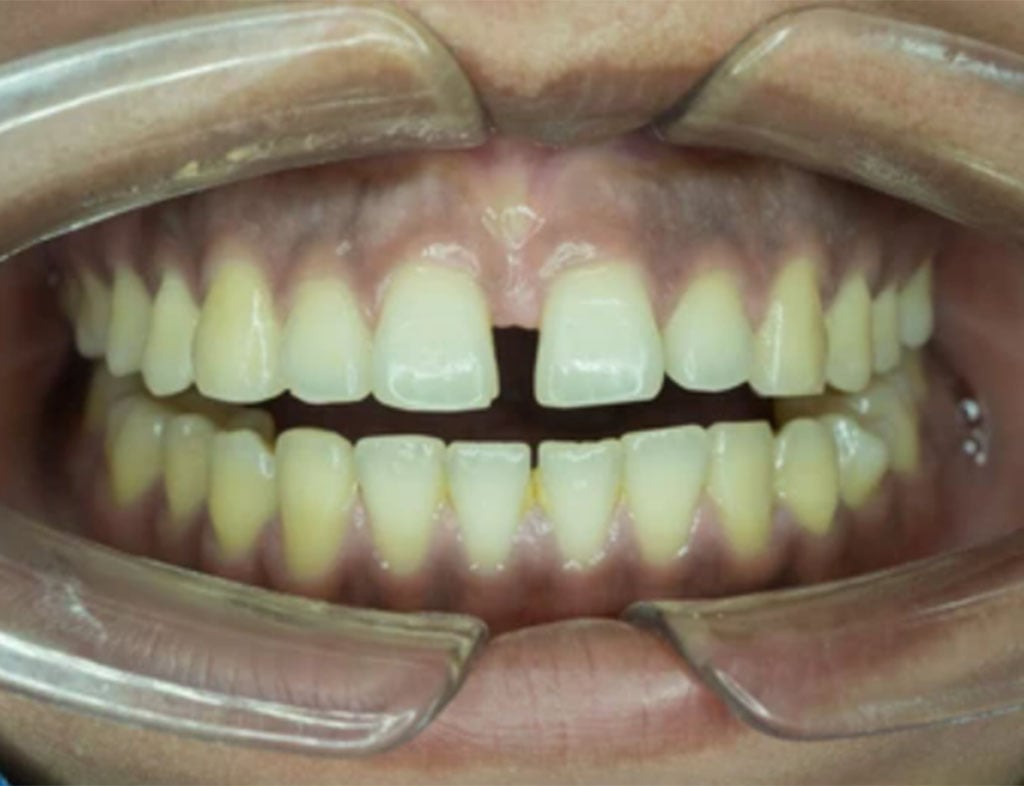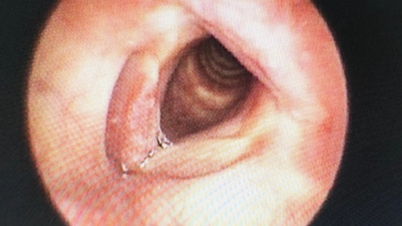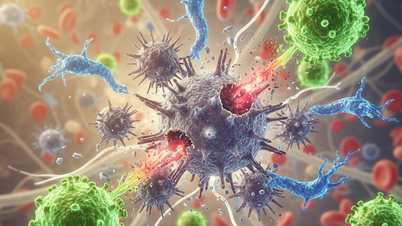In some people with more pigment than normal people, the gums are still pink but will be slightly darker than normal people. The gums can also turn red and swollen if they are inflamed, according to the health website Healthline (USA).

External impact can cause the gums to bruise and turn black.
On the contrary, gums that suddenly turn pale can be a sign of vitamin deficiency or cardiovascular disease. For people whose gums turn black, the cause is not only because they have more melanin in their body but also because of the accumulation of melanin in that gum area. Melanomas are small, benign black spots with a high density of melanin, formed when the body produces more melanin than normal.
What is the cause?
The cause can also be due to trauma. Gums are like skin, impacts also cause bruises. When that happens, the bruise will cause the gums to turn black. In this case, the sufferer does not need to worry because it will heal on its own.
In children, the appearance of black spots on the gums is not uncommon. This is due to the teething process. When new teeth begin to emerge, black spots may appear on the gums.
In some cases, black gums are a sign of a serious problem. For example, Peutz-Jeghers syndrome causes dark spots on the gums. These appear in childhood and may disappear in adulthood. This genetic syndrome, although benign, increases the risk of cancer.
Dark patches on the gums can also be a symptom of Addison's disease, a condition in which the adrenal glands fail to produce enough hormones.
Acute necrotizing ulcerative gingivitis also causes the gums to turn black or gray. This infection causes the gum tissue to die. Your doctor will use antibiotics to control the infection.
In the worst case scenario, it is cancer. In that case, the doctor will order some tests before making a final diagnosis. Based on the diagnosis results, the doctor will have appropriate treatment methods, according to Healthline.
Source link


![[Photo] Prime Minister Pham Minh Chinh chaired a meeting to evaluate the operation of the two-level local government model.](https://vphoto.vietnam.vn/thumb/1200x675/vietnam/resource/IMAGE/2025/10/29/1761751710674_dsc-7999-jpg.webp)


![[Photo] New-era Party members in the "Green Industrial Park"](https://vphoto.vietnam.vn/thumb/1200x675/vietnam/resource/IMAGE/2025/10/30/1761789456888_1-dsc-5556-jpg.webp)
![[Photo] Fall Fair 2025 - An attractive experience](https://vphoto.vietnam.vn/thumb/1200x675/vietnam/resource/IMAGE/2025/10/30/1761791564603_1761738410688-jpg.webp)



































































































Comment (0)